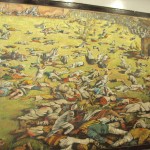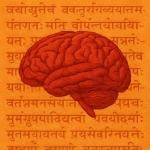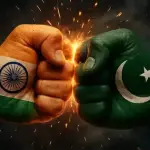As the movement’s military chief, he is second only to the one-eyed leader Mullah Mohammad Omar.
He is believed to be responsible for appointing commanders and a shadow network of governors and is particularly involved in western and southern Afghanistan, where up to 15,000 troops are now conducting Operation Moshtarak.
But the real significance of his capture in Karachi does not lie in its immediate effect on the battlefields of Helmand.
Taliban commanders such as those resisting the offensive in Nad-i-Ali and Marjah have a high level of autonomy.
Mullah Barader’s arrest may undermine morale and disrupt links with the leadership, but senior members of the Quetta Shura, such as Mullah Dadullah in 2007, have been killed before and replaced with only temporary disruption.
The biggest significance of the joint raid by US and Pakistani agents lies in what it may say about the changing position of Pakistan’s powerful ISI military intelligence service.
London and Washington have for years been frustrated that the ISI has refused to target the leadership of a movement it once groomed as a counterweight to Indian influence in Afghanistan.
Western diplomats complained that while the Quetta Shura directed attacks in Helmand and Kandahar, the ISI could have arrested key figures at any time.
Pakistan’s intelligence officials appeared to stall and denied they had detailed information on the leadership’s whereabouts.
If the arrest of Mullah Baradar heralds a change in the ISI position towards its former protégés rather than being a one off, it will be a landmark event in the counter insurgency.
It follows the ISI’s declaration earlier this month that it wished to play a significant role in Hamid Karzai’s attempts to reconcile with senior insurgent leaders.
Mullah Baradar’s capture alive is also significant.











